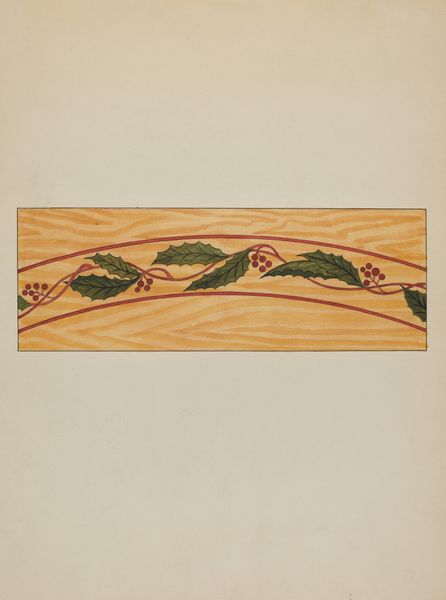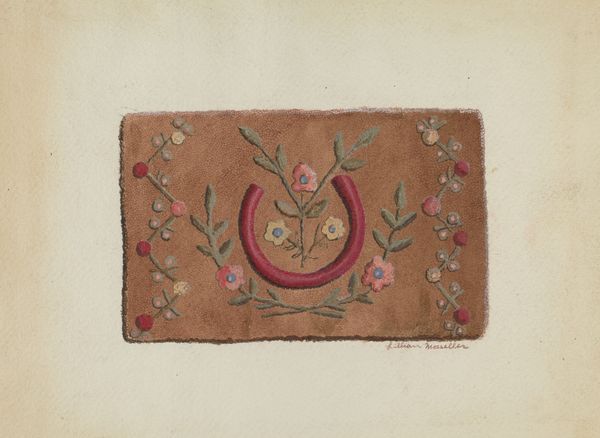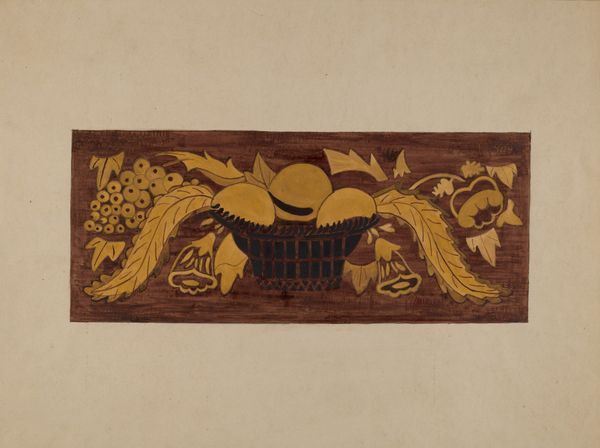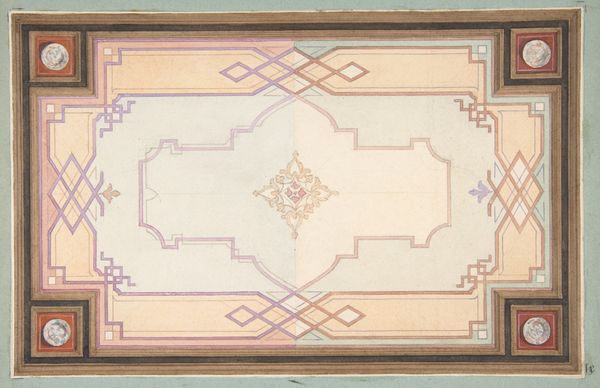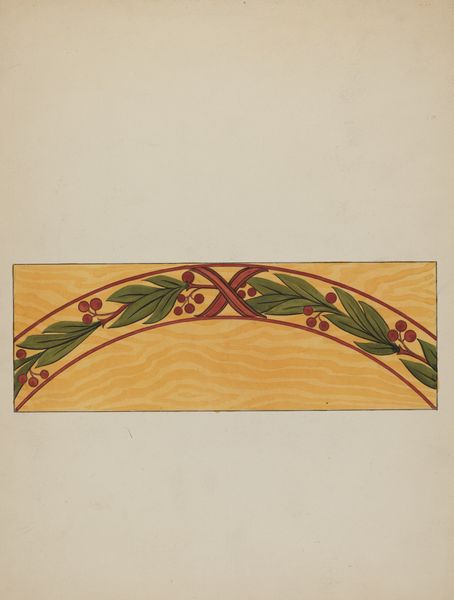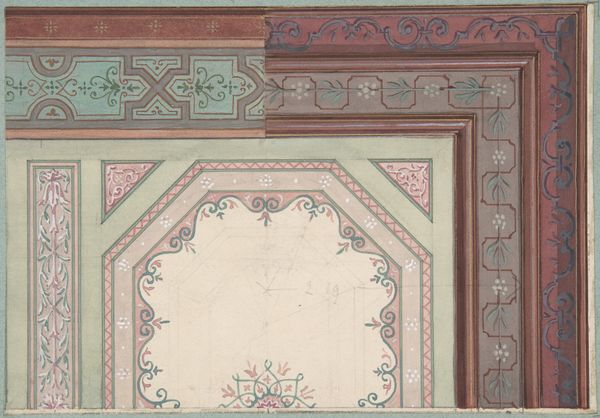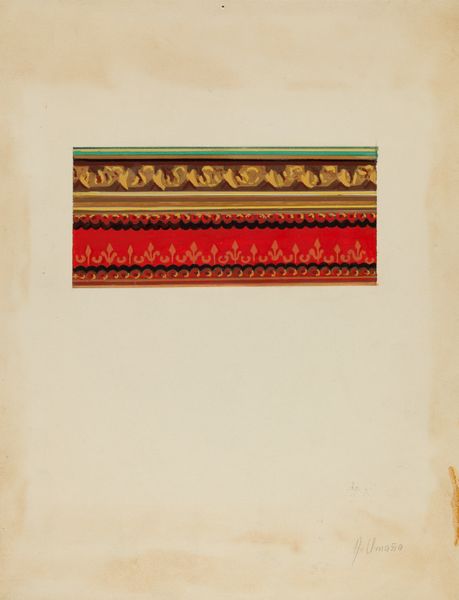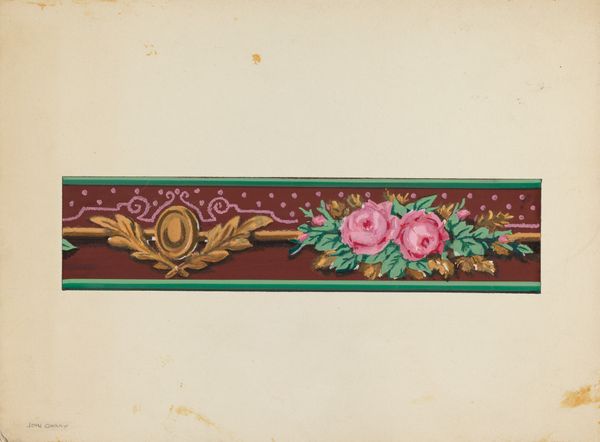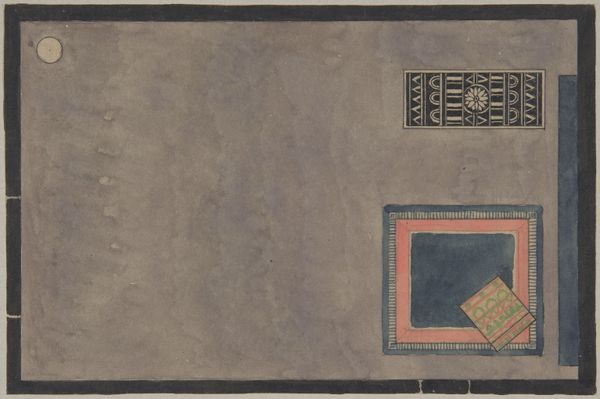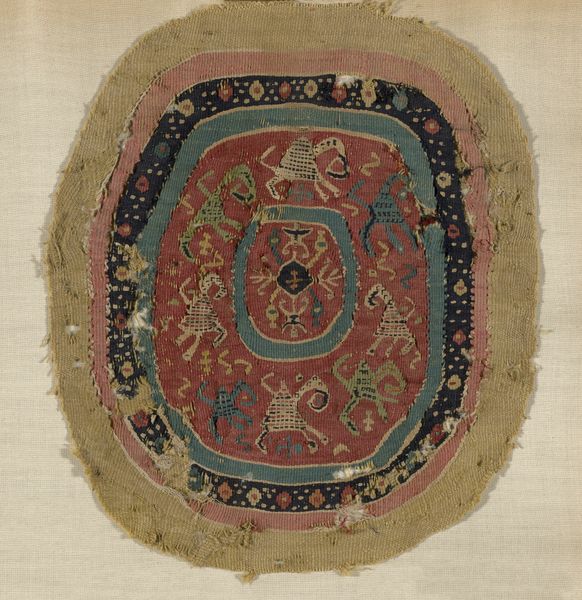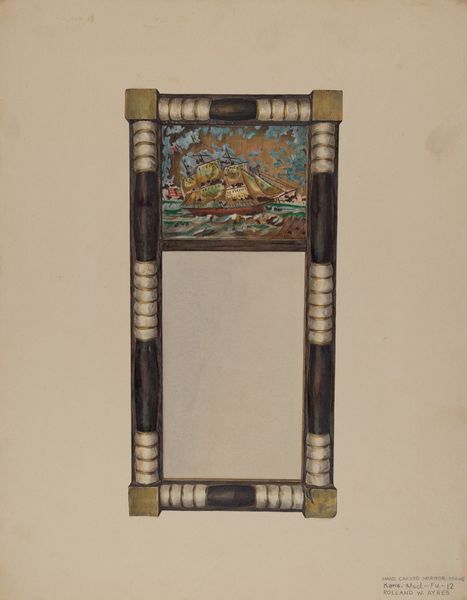
drawing, coloured-pencil, paper, pencil
#
drawing
#
coloured-pencil
#
water colours
#
paper
#
pencil
#
decorative-art
Dimensions: overall: 35.2 x 45.5 cm (13 7/8 x 17 15/16 in.) Original IAD Object: none given
Copyright: National Gallery of Art: CC0 1.0
Curator: This piece, dating from around 1940, is titled “Empire Chair.” It's rendered using colored pencil and pencil, and possibly watercolor on paper. Editor: The first thing that strikes me is how flat it feels, despite the attempt to mimic wood grain. It's oddly static. The frame around it traps the design rather than allowing it to breathe. Curator: Precisely. Consider the formal structure—a central floral motif, flanked by symmetrical foliage, encased within a rectangle. This symmetry imposes a sense of rigid control, reflecting the neoclassical ideals prevalent during the Empire period. Editor: Yes, “control” is a key word here. Thinking about that historical period, it makes me consider this object within the framework of colonial power structures. The Empire style often borrowed and adapted motifs from colonized regions, essentially appropriating and recontextualizing them to assert dominance. Is there anything specific in this design that suggests that? Curator: Well, without knowing its exact intended use—perhaps a design proposal—it’s challenging to say definitively. However, note how the floral design, while symmetrical, isn’t strictly naturalistic. There's a deliberate stylization, perhaps hinting at an abstracted appropriation of other cultural forms into the overarching framework of Western Imperial aesthetics. Editor: That stylized representation is crucial. It reminds me of the many ways empire strips away original cultural context. It turns complex, nuanced symbols into simplified decorations intended only to project wealth and power. It makes me wonder, too, about the labor involved in crafting furniture intended for elite spaces. Who were the unseen artisans replicating these designs? Curator: An excellent point. It invites us to consider not just the visual presentation but the labor conditions, the networks of production behind such designs. And from a purely formalist perspective, consider the colors chosen: the royal blue border, the faux wood finish, the centralized red flower, like a heraldic emblem. Editor: Seeing those carefully chosen, even contrived colors, underscores the artificiality of it all. Even the simulated wood grain emphasizes the object’s status, not as something genuinely functional, but as a representation of a chair, of a concept of empire. Curator: Indeed. In just a seemingly simple drawing, we uncover layers of intentional design and unconscious biases—a fascinating dialogue between form and context. Editor: It makes you wonder if it's simply a picture, or if the design itself can hold a mirror to our collective past.
Comments
No comments
Be the first to comment and join the conversation on the ultimate creative platform.
